Side Loader Meaning and Definition Explained
Explore side loader meaning, uses, and benefits. See how side loaders maximize space, boost safety, and improve efficiency in warehouse and waste management.
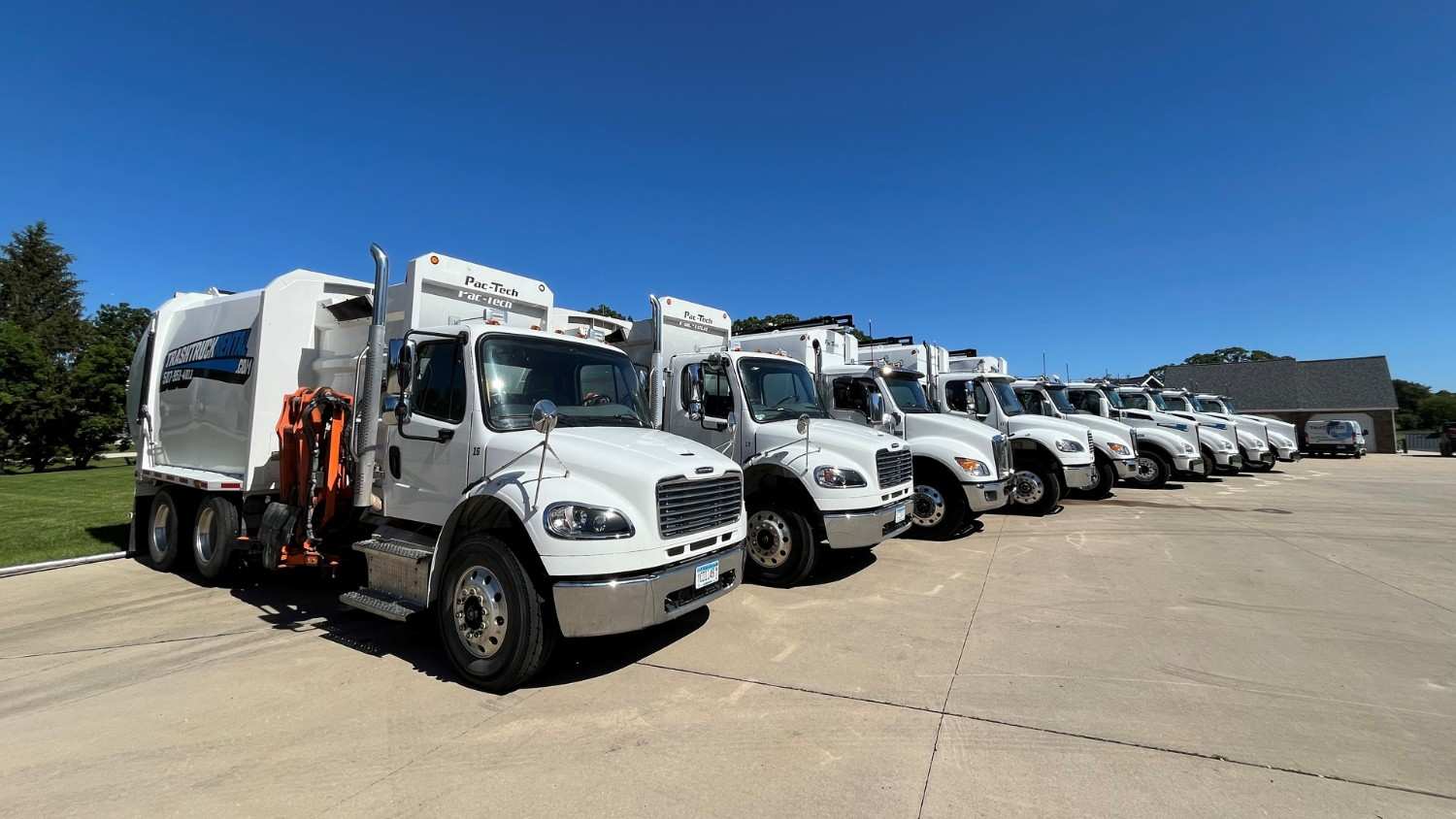
Explore side loader meaning, uses, and benefits. See how side loaders maximize space, boost safety, and improve efficiency in warehouse and waste management.

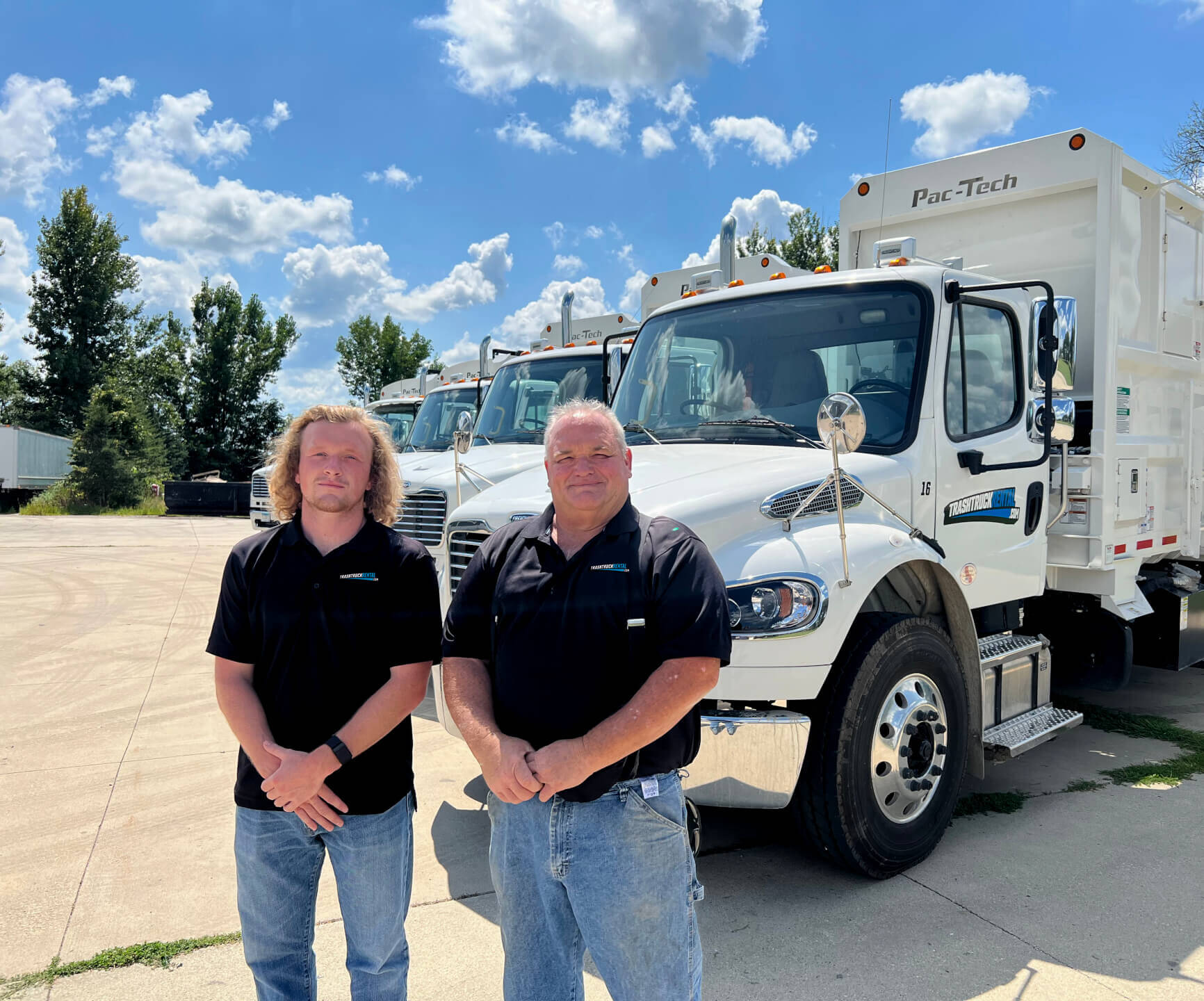
Understanding the world of waste management and sanitation equipment can be a bit overwhelming, especially when you're faced with terms like "side loader." While rear loader garbage trucks are commonly known and used in many cities, side loaders are a specialized solution designed for handling specific challenges that rear loaders aren’t always suited for. When you need to manage waste collection in dense residential areas with narrow streets, a side loader can be the ideal tool for the job. It’s built to make the collection of waste easier and more efficient, particularly in tight urban environments.
In this article, we’ll explain what a side loader is, how it works, and why it’s an essential tool for waste management industries.
At its core, a side loader refers to a type of garbage truck designed for one-person waste collection in residential areas. Instead of having a crew manually load trash at the rear, a side loader has a powerful robotic arm on its side. The driver operates the machine from inside the cab, drives alongside a trash bin, extends the arm to pick it up, and then lifts and empties the waste into the truck's hopper.
A traditional rear loader crew trying to manage a narrow residential street filled with parked cars must perform a series of maneuvers. The truck stops, a crew member exits the vehicle to collect the bin, and the truck restarts, all while dealing with tight spaces. A side loader improves this process. The truck pulls up next to the bin, lifts it from the side with its arm, and drives forward with the waste securely in place. The driver completes the entire operation without ever leaving the cab.
Side loader garbage trucks allow a single operator to manage waste collection efficiently. It’s a safer, faster, and more efficient way to handle residential waste collection, perfect for municipalities and private waste companies alike. Compared to rear loaders, side loaders cut down on labor, reduce injury risk, and speed up operations.
To fully appreciate the advantages of a side loader, it's important to understand how it works.
Also Read: Automated Side Load Garbage Trucks Market Trends and Forecast
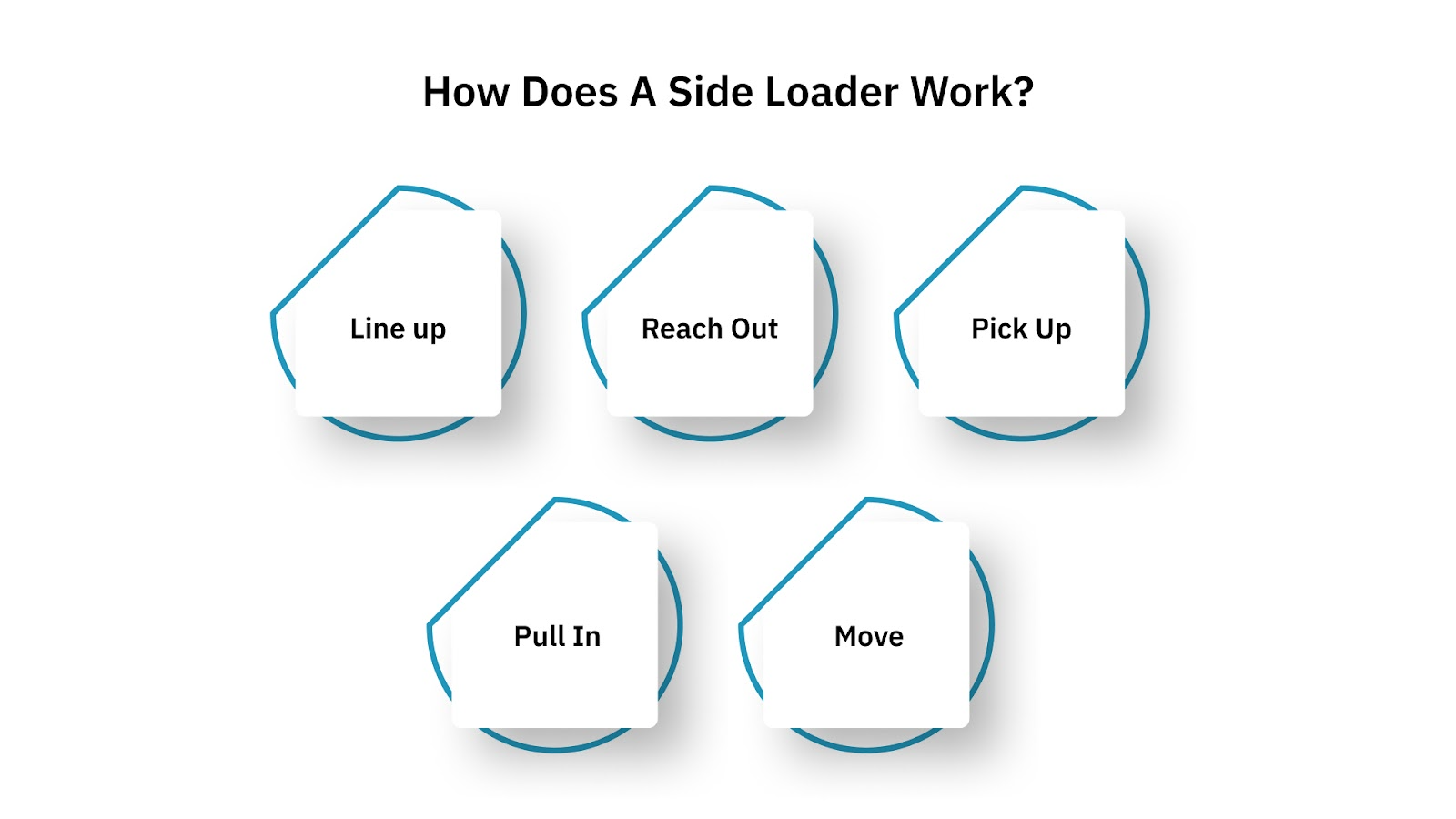
The magic of a side loader lies in its unique design and operational mechanics. Here’s a step-by-step look at how it works:
Now that you know how a side loader works, let’s see how it compares to a traditional garbage truck.
Side loaders are designed to excel in specific scenarios where traditional garbage trucks might not be as effective. They are particularly well-suited for handling bulky materials in tight spaces, offering a solution where maneuverability and stability are crucial.
Here's a breakdown of the key differences between a side loader and a traditional garbage truck.
Now that you see how side loaders differ from traditional garbage trucks and their important role in both material handling and waste management. Let’s explore why these differences translate into real-world advantages for your operations.
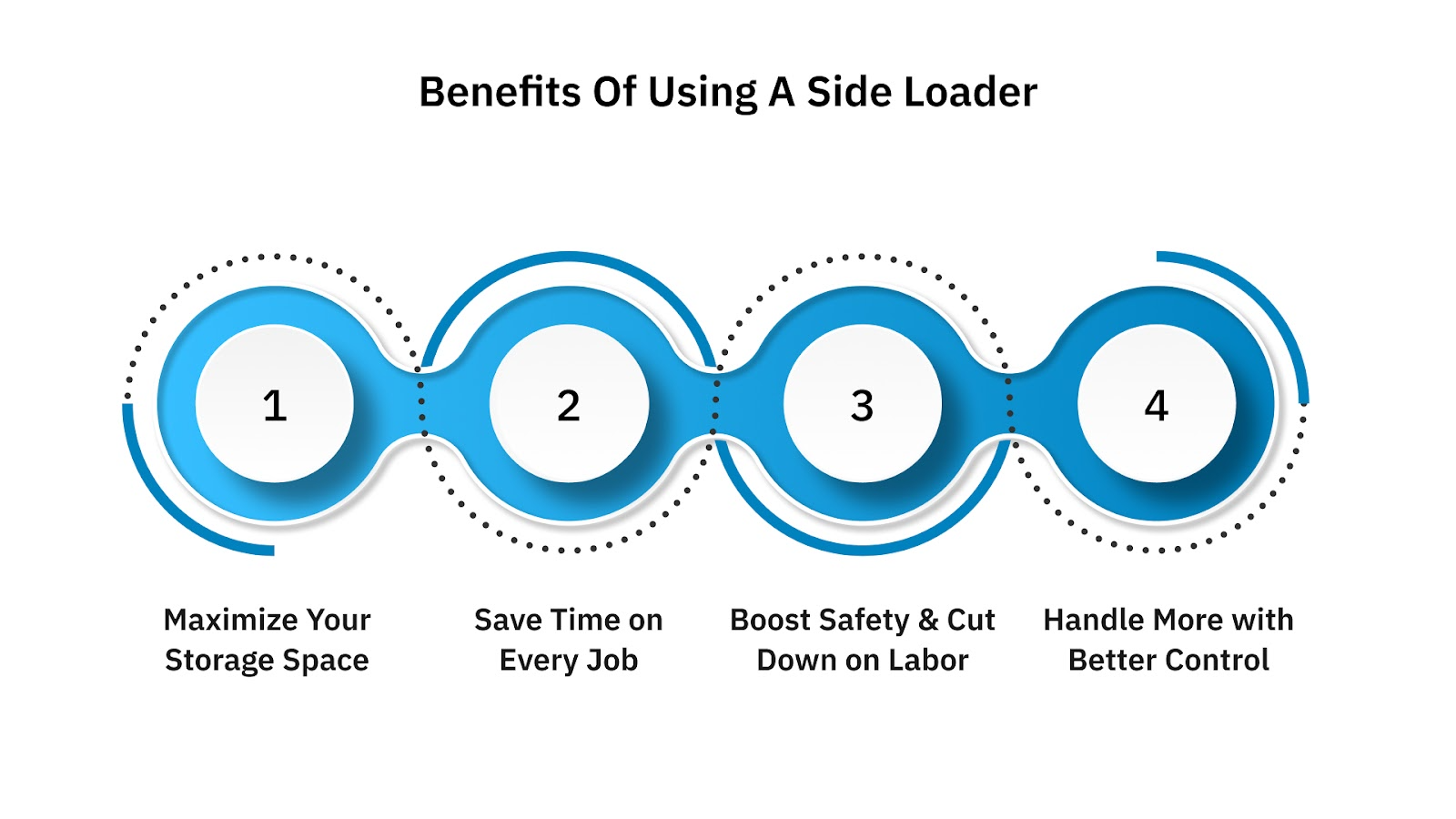
So, why would a company invest in a side loader? Side-loader garbage trucks offer several distinct advantages for fleet management and waste collection, primarily revolving around efficiency, safety, and cost savings:
Side loaders allow you to service routes with much tighter spaces and more challenging layouts. Since the driver doesn't need to exit the cab or the truck doesn't need to perform wide turns, you can navigate narrow residential streets and cul-de-sacs more quickly and efficiently. This allows you to service more homes in the same amount of time.
With the automated arm, a side loader can quickly and cleanly empty a bin and move on to the next stop. This eliminates the manual labor of a crew member handling the bin and the time it takes for them to get on and off the truck. This makes loading and unloading faster, allowing your team to complete routes more efficiently.
The side loader's single-operator design is a significant advantage. One person can do the job of a two- or three-person crew, which directly reduces your labor costs. More importantly, keeping the operator in the cab at all times dramatically reduces the risk of injuries from lifting heavy bins or being exposed to traffic, making the job much safer.
The side loader's automated system provides precise control over the collection process. The driver can carefully pick up and empty bins, minimizing the risk of spills and damage to property. This consistent, controlled operation leads to fewer missed collections and a higher standard of service.
With these benefits in mind, let’s explore where side loaders are most useful.
Side loaders aren’t made for every job, but they’re a great fit for specific tasks. You’ll find them especially helpful when working with:
While side loaders offer impressive versatility and efficiency across various tasks, it is also important to understand the potential challenges that come with operating and maintaining them. Let’s take a closer look at what to watch out for.
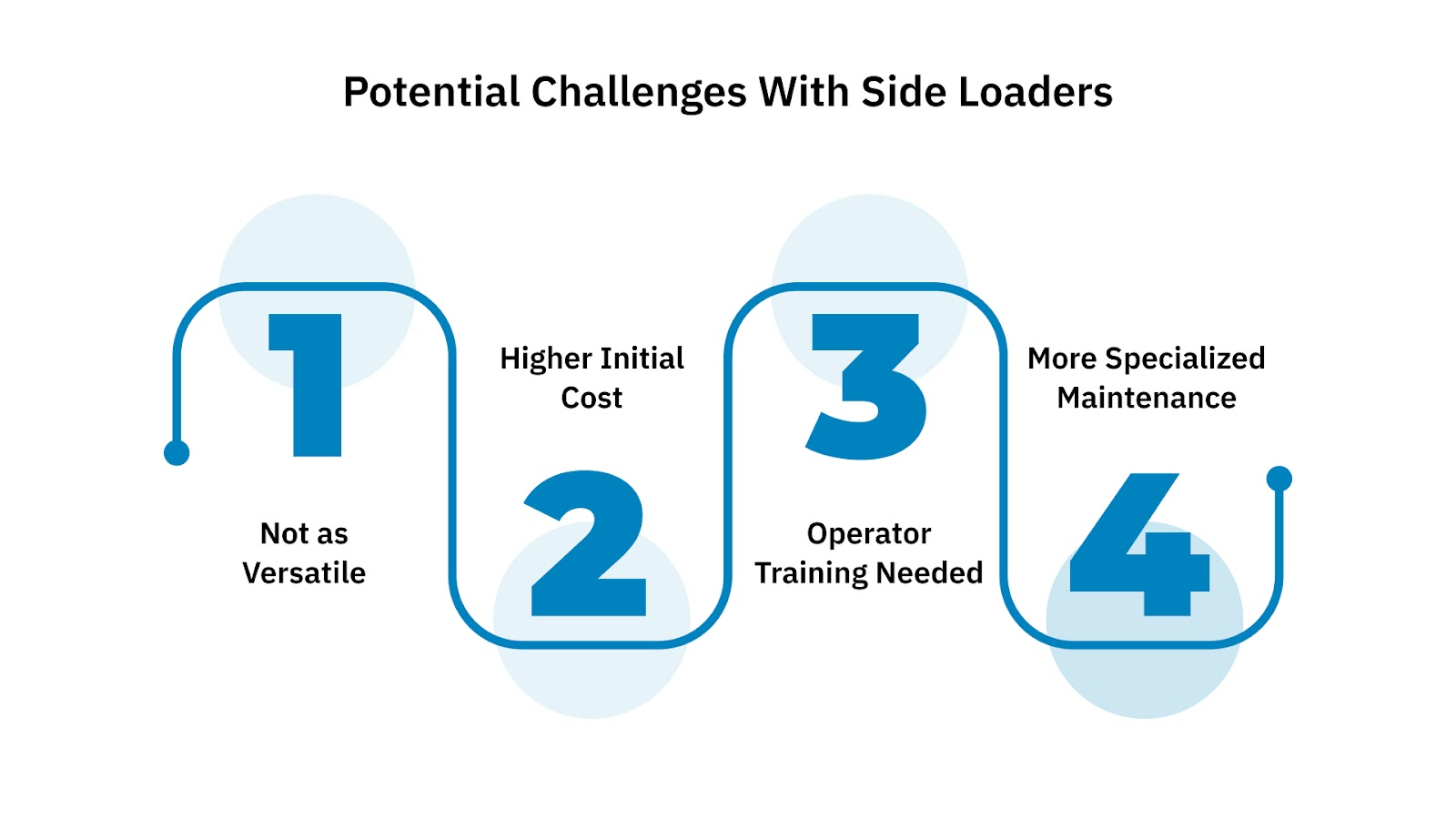
Side loaders can be a great choice, but they aren’t ideal for every situation. Here are a few things to consider before deciding:
While side loaders offer major benefits, they also come with a few challenges that need careful planning and the right support. To get the most from your side loader, you need the right equipment and support. Trash Truck Rental delivers both.
As a fleet manager, operations director, CEO, or COO, you understand the importance of keeping your fleet running smoothly while managing costs. Waste management operations and municipal sanitation departments come with their own set of challenges, from unexpected breakdowns to fluctuating demand. What you need is a solution that combines reliability, efficiency, and affordability, backed by a trustworthy partner.
With over 20 years of industry experience, we offer dependable trash truck rental and purchase solutions tailored for decision-makers like you. At Trash Truck Rental, we’ve built a strong reputation for customer service and cost-effective fleet solutions that allow for flexible budgeting.
We provide both rental and purchase options designed to meet your specific needs, so you can manage your fleet with confidence.
We primarily operate in Minnesota, Wisconsin, and Iowa, building a reputation as a reliable, community-focused partner. Additionally, we offer nationwide sales, providing reliable waste management equipment across the U.S.
We supply a dependable lineup of well-maintained, late-model trucks, including:
Each truck is regularly serviced to reduce downtime and keep your routes running smoothly.
Need a short-term backup during a repair? Or looking to expand for a new route? We’ve got you covered. Choose from:
You have the flexibility to scale up or down according to your current needs. Whether you’re managing a city fleet or a private waste company, we offer practical and affordable rental and purchase plans. We understand that your budget is tight, so we ensure every dollar counts. Our solutions are designed to deliver the best value, without compromising on performance or quality.
A side loader isn’t just another machine; it’s a solution for safely and efficiently moving long, bulky products in demanding spaces. Whether you’re expanding a fleet or upgrading operations, the right equipment makes all the difference. Trash Truck Rental brings you practical expertise, flexible options, and dependable machinery, so you can focus on what matters: running a safe, productive, and cost-effective operation. Ready to get started? Contact our team today!
Side loaders are ideal for dense residential neighborhoods with standardized carts. They save time and reduce labor costs by allowing a single operator to manage an entire route. For bulky waste or large commercial dumpsters, rear or front loaders are usually more suitable.
Since side loaders use an automated robotic arm, drivers need training to operate the controls safely and efficiently. Most operators adapt quickly, but structured onboarding is recommended to reduce errors and downtime.
Side loaders often require more specialized maintenance, particularly for the robotic arm and hydraulic system. However, because they reduce labor costs and speed up routes, many fleets find the long-term savings outweigh the higher maintenance needs.
Yes. At Trash Truck Rental, you can choose short-term rentals to cover seasonal spikes, temporary contracts, or downtime while your own truck is being serviced.
The company's primary service areas are Minnesota, Wisconsin, South Dakota, North Dakota, Nebraska, Kansas, Missouri, Illinois, Indiana, Michigan and Iowa. However, we are open to nationwide sales across all the states of the United States, providing solutions to a broader audience.
Ready to Upgrade Your Process Operations?